How to Produce Clothes Hanger

Clothes Hanger Shape Up
The first step is to create an outline of the wire hanger.
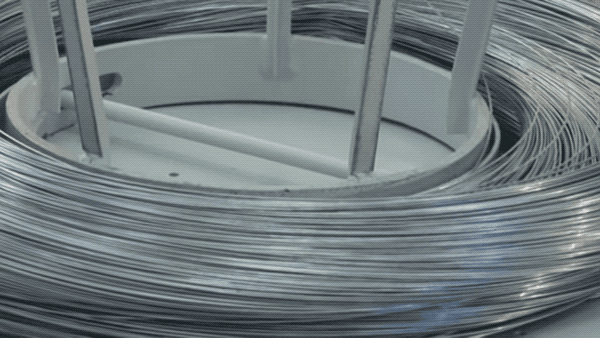
Straighten the wire.

Send into the bending machine, ” bend -bend – twist”, the wire hanger is done.
To be honest, I haven’t had a chance to see exactly how it’s made…. In order to make it clearer, let’s take a slow motion picture
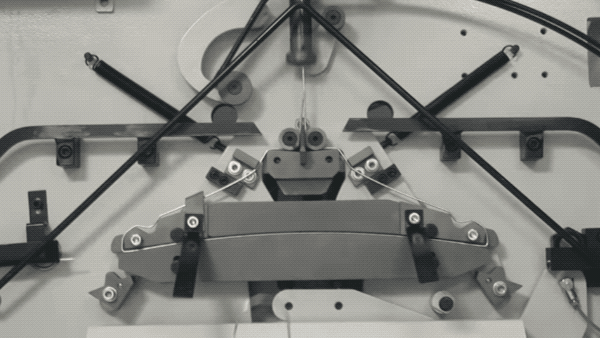
Looking at the details, the wire is threaded through, then cut, and the two sides are bent upwards in an approximate triangle to form the hanger arm.
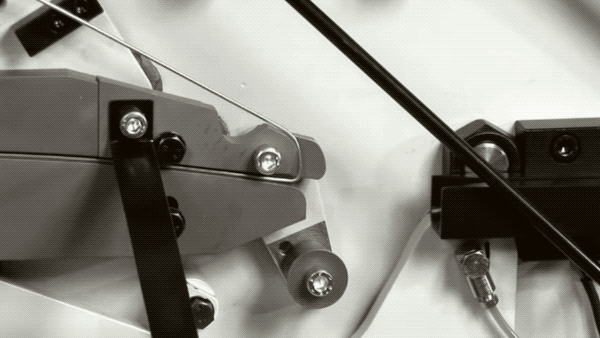
The upper iron wire is long on one side and short on the other, and the “arm-like” parts on both sides of the machine are pressed down, as shown in the figure below
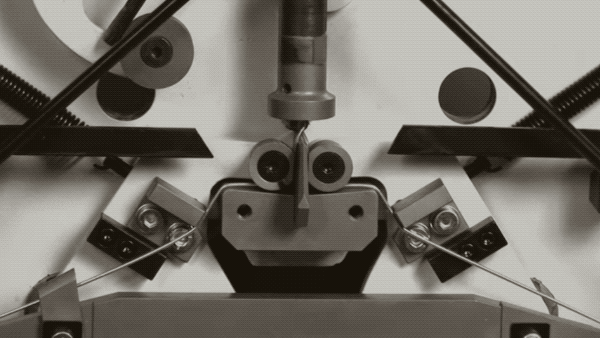
The top steel cylinder goes down, and two pieces of wire of varying lengths are quickly wound into one strand. It’s like twisting a twist…
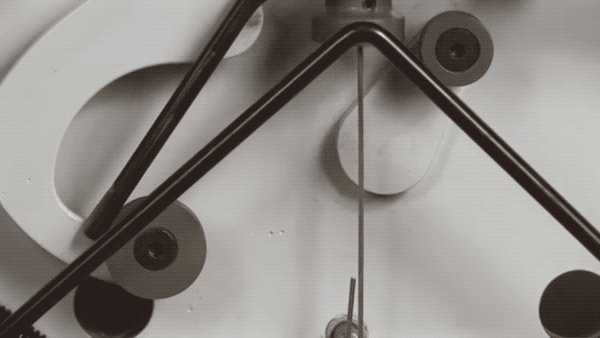
The steel cylinder is lifted, the remaining wire ends are bent into hooks, and a wire hanger is made.
Thermoplastic Dipping Process
How is the plastic skin on the outside of the wire hanger attached, uniform and complete?
Here is the use of the “thermoplastic dipping process”.The dipping process is a plastic coating technique that can be categorized into two types based on the raw materials used: powder dipping and liquid dipping. Powder dipping is commonly employed for coating metal surfaces such as bicycle baskets and railway mesh fences, known for its exceptional adhesion and durability.
Most of the liquid dip plastic process uses hot dip PVC plastisol , thermoplastic coating has the characteristics of softening in heat, and can be cured into film after cooling, mainly physical melting plastic formation process, processing and production is relatively simple.
Plastisol Coating Dip
The liquid immersion process is employed, similar to the treatment of old rubber scissors and pliers.

The pliers are dipped into the liquid plastisol coating at their ends, then removed and subjected to baking and curing to form a film.

The same procedure applies to the plastic coating on wire hangers. Firstly, the clothes hanger undergoes rust removal and oil removal treatments before being immersed in hot melt plastic liquid.

Slowly removing it from the liquid results in a wrapped plastic layer around the wire hanger.

Let’s take a look at another dipping process – powder dipping
Powder Dipping
The first step is to send the hanger into the baking tunnel for preheating.

Its function is to heat the hanger to the temperature above the melting point of the plastic powder, so that the plastic powder can be wrapped in the hanger and softened by heat.

The conveyor belt needs to be covered with thermoplastic powder, and the hanger is buried in the plastic powder. Under the action of the blower, the powder slowly rotates, jumps and rolls in full contact with the “hot” hanger. The powder near the hanger will melt and coat the wire hanger.

So the question is, will the blower send the powder particles flying around the sky? Not really.
Flowing dip is compressed air running through the bottom of the line. The whole powder is somewhat similar to the effect of quicksand, flowing inside to completely coat the wire hanger. The coat hanger is coated with plastic powder, and the excess plastic powder is shaken off by vibration, and then collected on the pole.

The process is not completely finished, and then the hangers adhered with plastic powder must be baked and cured again at high temperature. Its function is to make the outermost surface of the hanger a softened uniform coating.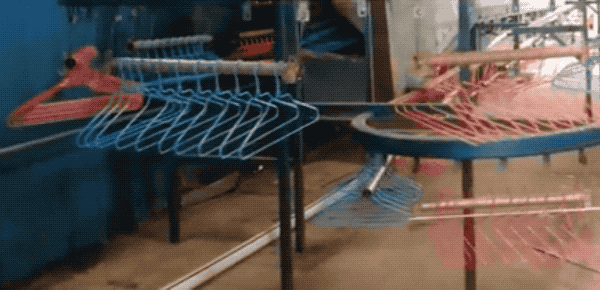
Finally, manual quality inspection will pick out the defective products with scratch damage, and this part will be baked twice for curing.
